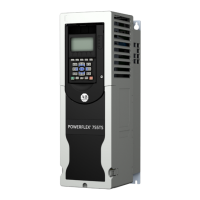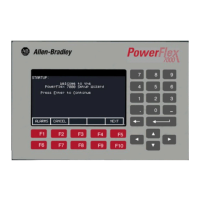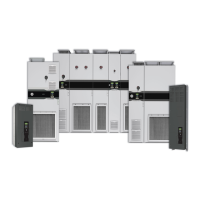2-96 Flux Braking
Flux Braking You can use flux braking to stop the drive or to shorten the
deceleration time to a lower speed. Other methods of deceleration or
stopping may perform better depending on the motor and the load.
To enable flux braking:
1. [Bus Reg Mode A, B] must be set to “1” Adjust Freq to enable the bus
regulator.
2. [Flux Braking] must be set to 1 “Enabled”.
When enabled, flux braking automatically increases the motor flux resulting
in an increase of motor losses. The flux current is only increased when the
bus voltage regulator is active. When the bus voltage regulator is not active,
the flux current is returned to normal. The maximum flux current is equal to
rated motor current but may be further reduced depending on the load level,
IT protection, or current limits. In general, the flux current is not increased
when the motor is at or above rated speed. At higher speeds, field
weakening is active and the motor flux current cannot be increased. As the
speed decreases below base speed, the flux current increases until there is
enough voltage margin to run rated motor current.
Because flux braking increases motor losses, the duty cycle used with this
method must be limited. Check with the motor vendor for flux braking or
DC braking application guidelines. You may also want to consider using
external motor thermal protection.
Vector
